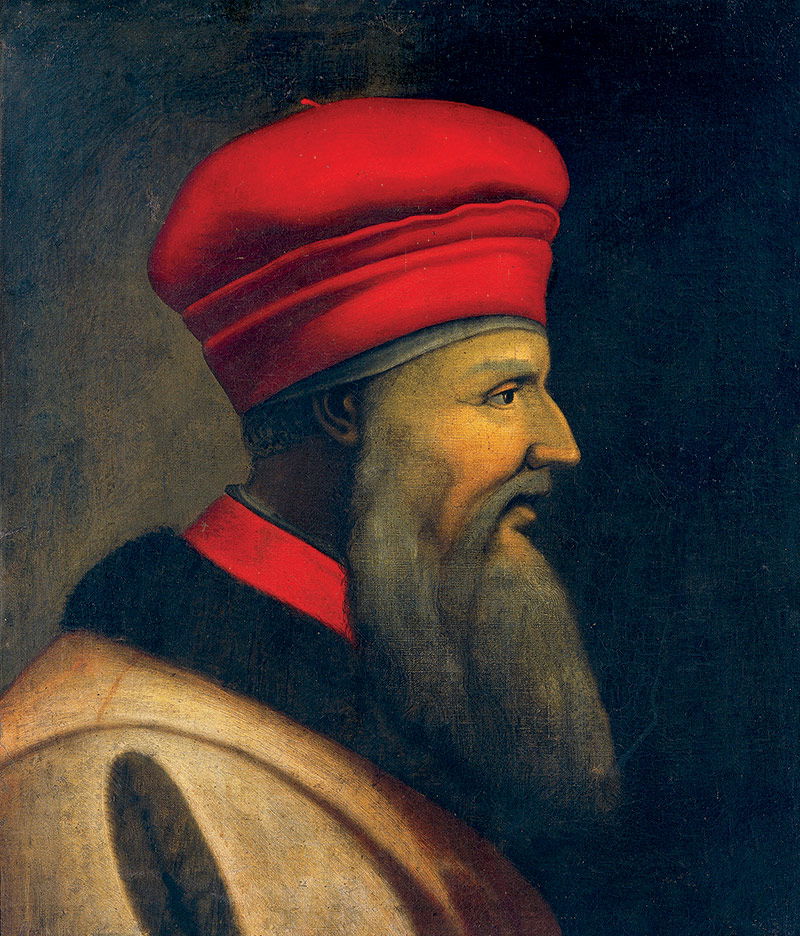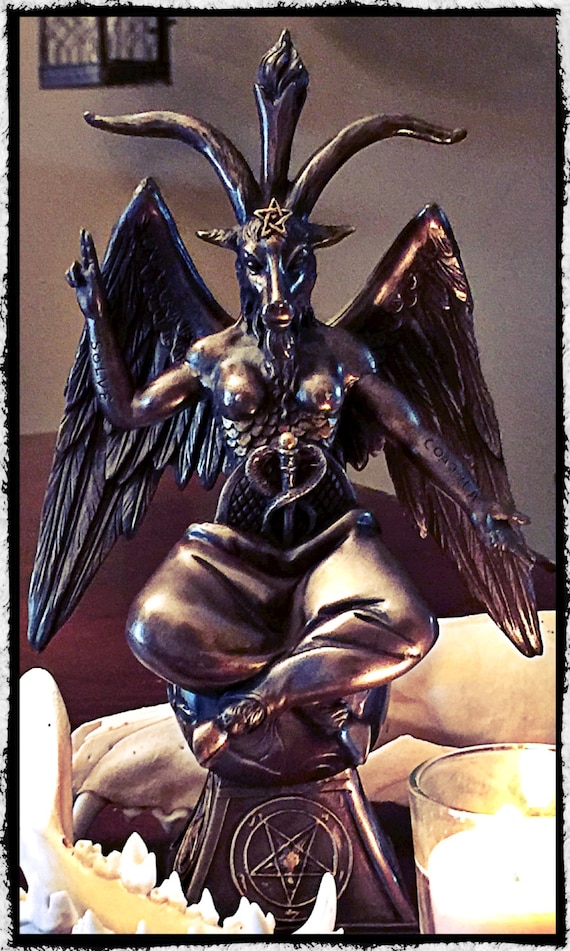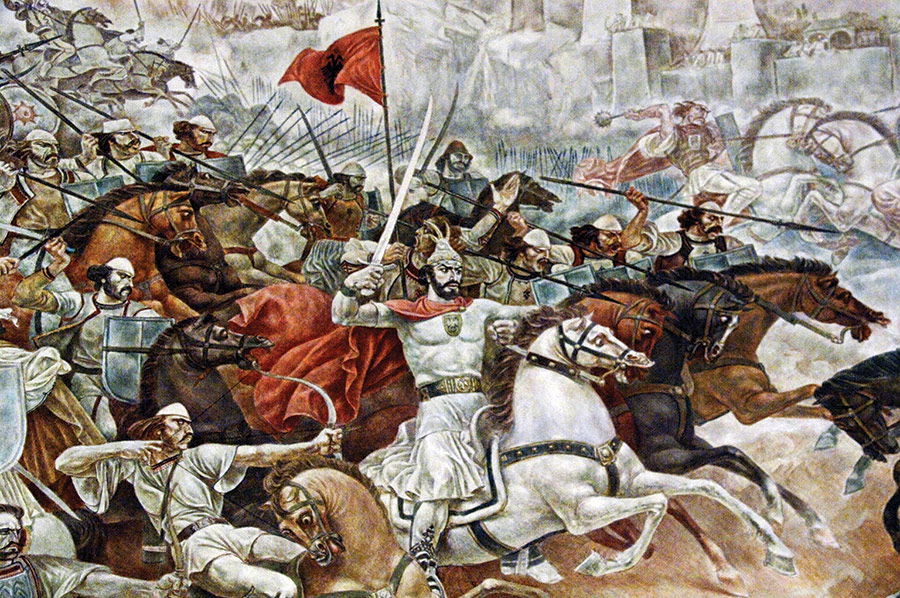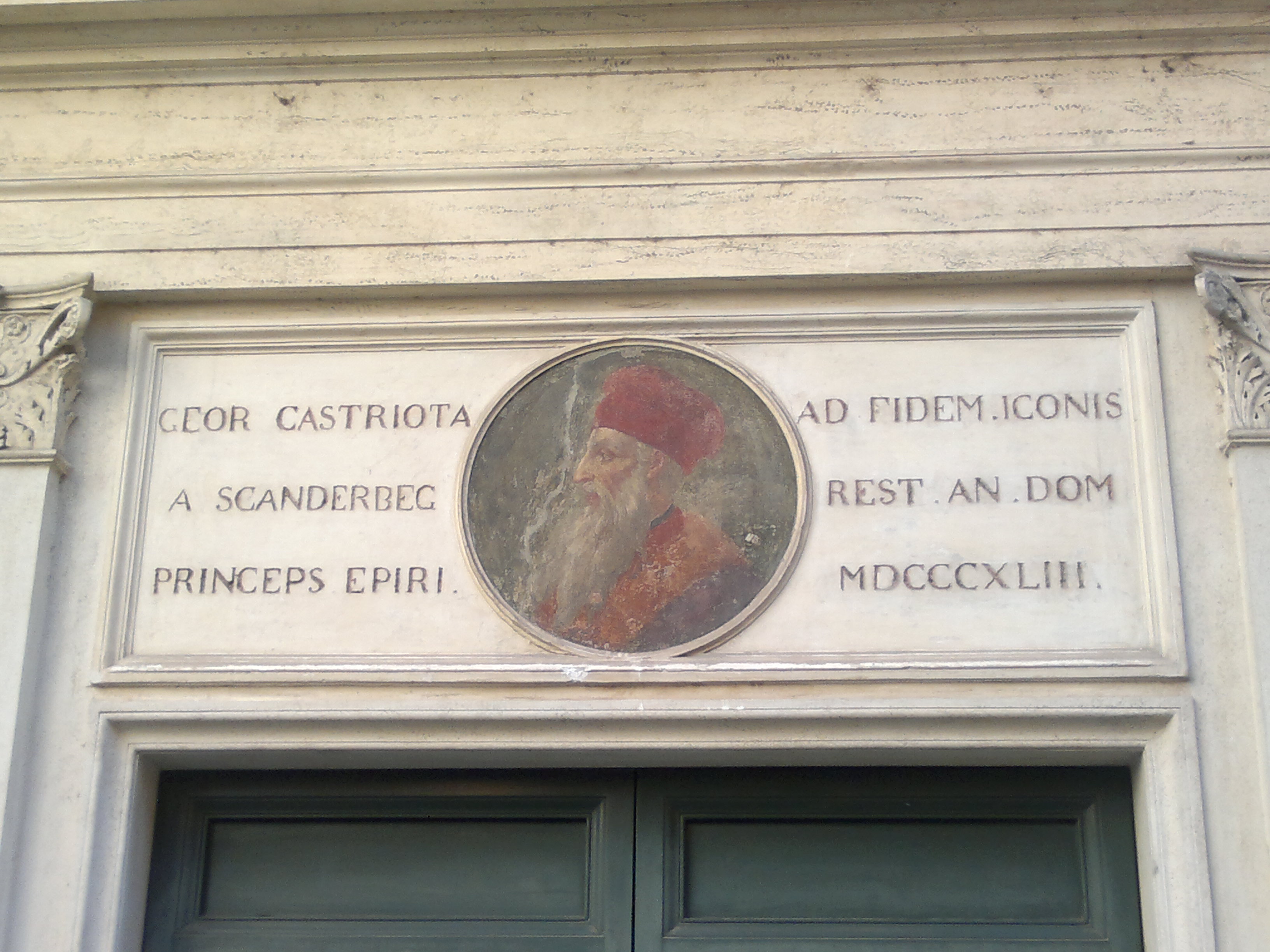One of the most iconic pieces of armour from any era, but especially the 15th century, is the helmet of the Albanian national hero Skanderbeg. With its distinctive horned goats head it is a suitably unique piece for a one of a kind warrior. But why a goat's head?
The first thought that comes into my mind is the demon Baphomet, the deity that the Knights Templar were falsely accused of worshipping in trial transcripts for the Inquisition of the Knights Templar starting in 1307. The name had come to Europe with the returning Crusaders but rather than being the goat-demon (that image is more of a 19th century invention) the original Baphomet = Mahomet, Muhammed. A chronicler of the First Crusade, Raymond of Aguilers, called the mosques Bafumarias. The templar trials essentially accused them of having secretly turned to the enemy religion.
Of course it's entirely coincidental, but Skanderbeg of the Baphomet horns was himself at one time a Muslim.

Gjergj Kastrioti was born into the noble Castriot family. As a child he was taken as part of the Devshirme 'child tax', converted to Islam and was raised at the Ottoman court, then served the Ottoman sultan for the next twenty years, risingto become sanjakbey (governor) of the Sanjak of Dibra in 1440. In 1443, he deserted the during the Battle of Niš and became the ruler of Krujë, Svetigrad, and Modrič. He returned to the Orthodox faith of his family and in 1444, he was appointed commander of the short-lived League of Lezhë. He consolidated power throughout his homeland and thus for the first time Albania was united under a single leader.
Inevitably the Turks did not take kindly to a turncoat. For 25 years, from 1443 to 1468, Skanderbeg's 10,000 man army held back repeated incursions into the Albanian mountains by much larger Turkish armies.
In 1451, he recognized de jure the sovereignty of the Kingdom of Naples over Albania through the Treaty of Gaeta, to ensure a protective alliance, although he remained a de facto independent ruler. In 1460–61, he participated in Italy's civil wars in support of Ferdinand I of Naples. In 1463, he became the chief commander of the crusading forces of Pope Pius II, but the Pope died while the armies were still gathering.
Returning to the iconic helmet and its horns. The best explanation I have comes from Skanderbeg's Islamic childhood. In Surah 18 verses 83-101 of the Quran, Dhul-Qarnayn, 'He of the two horns' is a heroic figure who builds a wall to hold back the monstrous giants, Gog and Magog. Is Skanderbeg's helmet a sly anti-Islamic joke in which he positions himself as Dhul-Qarnayn and implies the Muslim Turks are the giant threat to be held at bay?
Another layer to the reference is the fact that the Dhul-Qarnayn story supposedly entered the Quran from legends of Alexander the Great's exploits in the Middle east. Alexander, as depicted on his coins, wore the horns of the ram-god Zeus-Ammon. He was also (incorrectly) linked to the Sassanid walls in the Caspian Gates which held back the Scythian hordes. And if Dhul-Qarnayn, he of two-horns, is Alexander, it is an appropriate symbol for a man who chose Alexander (Skanderbeg) as his nom de guerre.










